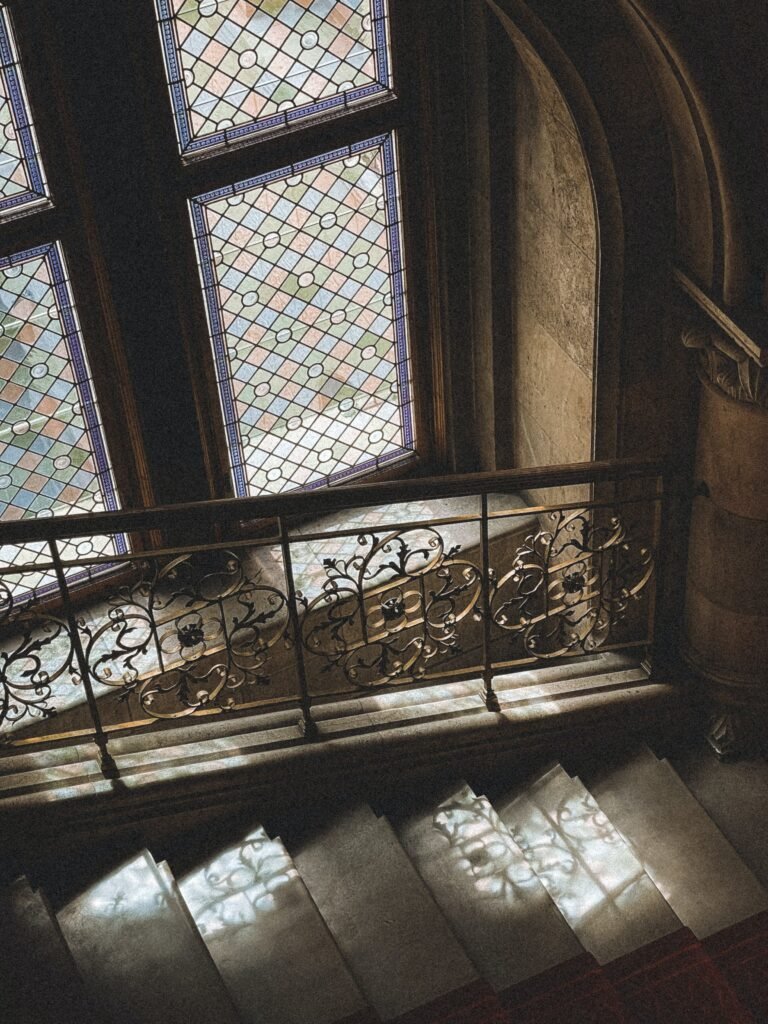
Imagine stepping into your dream bathroom – a space that is both functional and beautiful, tailored to your personal style and needs. With our comprehensive renovation guide, you can turn this dream into a reality. From design inspiration and choosing fixtures to budgeting and project management, we will provide you with all the essential information you need to create the bathroom of your dreams. Get ready to transform your bathroom into a sanctuary where you can relax and rejuvenate, all while adding value to your home.

This image is property of images.pexels.com.
Planning Your Renovation
Assessing your needs and goals
Before embarking on a bathroom renovation project, it’s important to assess your needs and goals for the space. Consider how you use the bathroom and what improvements you would like to make. Do you need more storage? Is the layout not functional for your needs? Taking the time to think about how you envision your dream bathroom will help guide the rest of the renovation process.
Determining your budget
Before diving into any renovation project, it’s crucial to set a budget. Determine how much you are willing to spend on the renovation and allocate funds accordingly. Remember to account for both the cost of materials and the cost of professional labor if needed. By having a clear budget in mind, you can make informed decisions throughout the renovation process and avoid overspending.
Researching bathroom designs and trends
To ensure that your renovated bathroom stands the test of time and reflects your personal style, take some time to research bathroom designs and trends. Look for inspiration online, in magazines, and on social media platforms. This will give you a better idea of the styles, colors, and features you want to incorporate into your own bathroom renovation.
Measuring and assessing your current bathroom space
Before making any decisions about the layout or fixtures for your bathroom renovation, it’s essential to measure and assess your current bathroom space. Take accurate measurements of the length, width, and height of the room. Pay attention to any existing features, such as windows, doors, and plumbing fixtures, that may affect the layout of the new bathroom. This information will help you make informed decisions and ensure that everything fits correctly in the new design.
Creating a renovation timeline
Once you have a clear understanding of your goals and have done the necessary research, it’s time to create a renovation timeline. Determine how long you expect the renovation to take, taking into account any potential delays or unforeseen issues that may arise. Having a timeline will help you stay organized throughout the renovation process and ensure that all tasks are completed in a timely manner.
Choosing Your Bathroom Style
Traditional bathroom
If you prefer a classic, timeless look, a traditional bathroom may be the right choice for you. Traditional bathrooms often feature ornate details, such as clawfoot tubs, pedestal sinks, and intricate tile patterns. Rich colors and finishes, such as dark wood cabinets or marble countertops, can also contribute to the traditional aesthetic.
Contemporary bathroom
For those seeking a clean, minimalist look, a contemporary bathroom may be the way to go. Contemporary bathrooms typically feature sleek, straight lines and a neutral color palette. Minimalistic fixtures and simple, clean design elements create a sense of modernity and sophistication.
Transitional bathroom
If you can’t decide between traditional and contemporary styles, a transitional bathroom offers the best of both worlds. This style blends classic elements with more modern touches, creating a balanced and timeless aesthetic. Think clean lines coupled with traditional materials, such as a modern vanity with a marble countertop.
Modern bathroom
For a truly sleek and futuristic look, a modern bathroom is the way to go. Modern bathrooms often feature bold geometric shapes, minimalistic fixtures, and a monochromatic color scheme. Glass shower enclosures and floating vanities are common elements in modern bathroom design.
Farmhouse bathroom
If you’re drawn to a cozy, rustic aesthetic, a farmhouse bathroom may be the perfect choice for you. This style emphasizes natural materials, such as reclaimed wood and stone, as well as vintage-inspired fixtures. A freestanding clawfoot tub or a farmhouse sink can add a charming touch to the space.
Industrial bathroom
For an edgy and industrial vibe, an industrial bathroom may be the right fit. Exposed brick walls, metal accents, and concrete or dark-colored tiles create the desired aesthetic. Functional fixtures with a no-frills design, such as wall-mounted faucets and stainless steel finishes, complete the industrial look.

This image is property of images.pexels.com.
Setting the Layout
Evaluating your existing bathroom layout
Before making any changes to the bathroom layout, evaluate the existing setup. Consider the placement of fixtures, such as the toilet, sink, and shower/bathtub. Assess whether the current layout is functional and if any adjustments need to be made to improve flow and usability.
Considering plumbing and electrical requirements
When setting the layout, keep in mind the plumbing and electrical requirements of your new bathroom design. Moving fixtures, such as the toilet or shower, may require adjustments to the plumbing system. Similarly, if you plan to add new lighting fixtures or outlets, you’ll need to account for the electrical work involved.
Making functionality a priority
While aesthetics are important, don’t overlook the importance of functionality when setting the bathroom layout. Consider how you use the space and prioritize features that will enhance usability. For example, make sure there is enough counter space near the sink, or allocate sufficient storage for toiletries.
Optimizing storage space
Storage is often a crucial consideration in bathroom design. Make the most of your space by incorporating clever storage solutions, such as built-in shelves, floor-to-ceiling cabinets, or vanity drawers. Utilize vertical space to maximize storage capacity without sacrificing floor space.
Selecting Bathroom Fixtures
Choosing the right bathtub or shower
The bathtub or shower is often the centerpiece of the bathroom, so it’s essential to choose the right one for your needs. Consider factors such as size, material, and style. If you prefer a luxurious bath, a freestanding bathtub can create a statement. Alternatively, a spacious walk-in shower with rainfall showerheads can provide a modern and refreshing experience.
Selecting a toilet
When selecting a toilet, opt for a style and flushing mechanism that aligns with your preferences and needs. Consider factors such as water efficiency, ease of cleaning, and comfort. Dual-flush toilets are a popular choice, as they offer different flush options for liquid and solid waste, contributing to water conservation.
Deciding on a bathroom vanity
The bathroom vanity is not only a functional element but also a design feature in itself. Consider the size and configuration that best suits your storage needs. Decide whether you prefer a wall-mounted vanity for a sleek, floating effect or a freestanding vanity for a more traditional look. Pay attention to materials and finishes that complement your chosen style.
Considering bathroom faucets and sinks
Faucets and sinks come in various styles, finishes, and configurations, so select ones that enhance your chosen bathroom style. Consider the number of handles, the height of the faucet, and any additional features, such as touchless activation or waterfall spouts. Similarly, choose a sink that complements the overall aesthetic and provides adequate counter space.
Choosing the right lighting fixtures
Lighting is crucial in creating a functional and inviting bathroom. Consider a combination of task lighting, ambient lighting, and accent lighting. Vanity lights on either side of the mirror offer even illumination for grooming tasks, while overhead fixtures or recessed lights provide overall brightness. Accent lighting, such as wall sconces or LED strips, can add a touch of luxury and ambiance.

This image is property of images.pexels.com.
Flooring and Wall Options
Exploring different flooring options
When selecting flooring for your bathroom, prioritize moisture resistance and durability. Popular options include ceramic or porcelain tiles, vinyl, laminate, and natural stone. Consider factors such as maintenance requirements, slip resistance, and aesthetic appeal when deciding on the best flooring material for your bathroom.
Choosing the right wall tiles
Wall tiles not only protect your walls but also contribute to the overall aesthetic of the bathroom. Consider materials such as ceramic, porcelain, glass, or natural stone. Pay attention to patterns, colors, and finishes that complement your chosen style. In wet areas, such as the shower or bathtub surround, opt for tiles with a high slip resistance rating.
Considering backsplash options
Backsplashes add visual interest and protect the walls behind the sink or vanity from water damage. Consider materials such as ceramic, glass, or mosaic tiles for a decorative touch. Alternatively, opt for a waterproof and low-maintenance backsplash material, such as solid surface or laminate panels.
Selecting the right paint color
If you prefer painted walls instead of tiles, choose a paint color that complements the overall aesthetic of your bathroom. Lighter colors can create an open and airy feel, while darker colors add depth and drama. Consider the natural lighting in the space and any color schemes you’ve already established with the fixtures and finishes.
Cabinetry and Storage
Determining the need for additional cabinetry
Evaluate your storage needs and determine whether additional cabinetry is necessary. Consider factors such as the number of people using the bathroom, the amount of toiletries needing storage, and any specific organizational requirements. Custom cabinetry can be tailored to your needs and maximize storage space.
Choosing the right materials and finishes
When selecting materials and finishes for your cabinetry, consider both functionality and aesthetics. Opt for moisture-resistant materials, such as marine-grade plywood or solid wood treated for humid environments. Choose finishes that complement your chosen style, whether it be a natural wood grain, a sleek laminate, or a classic painted finish.
Optimizing storage space
To make the most of your cabinetry, incorporate smart storage solutions. Utilize drawers with dividers for organized storage of smaller items such as toiletries and cosmetics. Consider vertical storage options, such as tall cabinets or shelving units, to maximize storage capacity without sacrificing floor space.
Incorporating smart storage solutions
In addition to traditional cabinetry, consider incorporating smart storage solutions into your bathroom design. Utilize vertical space by installing recessed or floating shelves. Add hooks or towel bars to the back of the bathroom door or inside the vanity doors for additional storage. Use baskets or bins to keep items organized and easily accessible.
Countertops and Surfaces
Exploring different countertop materials
Countertops play a significant role in the overall look and functionality of your bathroom. Popular options include natural stone (such as granite or marble), quartz, solid surface, and laminate. Each material has its own characteristics, such as durability, resistance to staining or scratching, and ease of maintenance.
Considering the pros and cons of each material
When choosing a countertop material, weigh the pros and cons of each option. For example, natural stone offers a timeless and luxurious look but requires regular sealing to prevent staining. Quartz is highly durable and requires minimal maintenance, but it can be more expensive than other options. Consider your priorities and select a material that suits your needs.
Choosing the right surface for your bathroom
Consider both aesthetics and functionality when selecting a countertop surface. Choose a color and pattern that complements your chosen style and overall color scheme. Think about the durability, heat resistance, and stain resistance required for a bathroom countertop.
Deciding on the right edging and finish
The edging and finish of your countertop can add a finishing touch to your bathroom design. Classic options include flat, square, or rounded edges, but more intricate options are also available. Consider the finish, whether it be polished for a shiny look, honed for a matte appearance, or textured for added visual interest.
Plumbing and Electrical Considerations
Evaluating plumbing requirements
When renovating a bathroom, it’s important to evaluate the plumbing requirements. Determine if any changes need to be made to the existing plumbing layout based on your new design. Consider the water supply lines, drains, and venting requirements. If you’re unsure, consult a professional plumber to ensure everything is up to code.
Ensuring proper drainage
Proper drainage is crucial in a bathroom to prevent water damage and potential mold growth. Make sure your new design allows for adequate slope in shower floors and proper positioning of drains. Consider using a waterproofing membrane in wet areas to ensure water doesn’t seep through the floors or walls.
Considering water-saving fixtures
In today’s environmentally conscious world, it’s important to consider water-saving fixtures when renovating your bathroom. Choose toilets, faucets, and showerheads that are designed to use less water without compromising performance. Look for WaterSense certified products, which meet EPA criteria for water efficiency.
Assessing electrical needs
As you plan your bathroom renovation, assess your electrical needs. Consider factors such as lighting fixtures, outlets for appliances or electric toothbrushes, and ventilation requirements. Ensure that your electrical system can safely support the additional load and consult with a licensed electrician if needed.
Upgrading electrical outlets and switches
If your bathroom’s electrical outlets and switches are outdated, it may be a good time to consider upgrading them. GFCI outlets are essential in bathrooms, as they provide protection against electrical shocks in wet areas. Consider installing dimmer switches for adjustable lighting and USB outlets for convenient charging of electronic devices.
Working with Professionals
Hiring a general contractor
If your bathroom renovation involves extensive structural changes or requires multiple tradespeople, hiring a general contractor can save you time and stress. A general contractor can coordinate the various aspects of the project, ensuring that everything runs smoothly. Research reputable contractors, check references, and get detailed quotes before making a decision.
Consulting with an interior designer
If you’re feeling overwhelmed or unsure about the design direction for your bathroom, consulting with an interior designer can be helpful. They can offer expert advice, help bring your vision to life, and guide you in selecting the right materials, fixtures, and finishes. Look for designers who specialize in bathrooms and have a portfolio that aligns with your style.
Getting quotes from multiple professionals
To ensure you get the best value for your money, obtain quotes from multiple professionals before making a decision. Reach out to contractors, plumbers, electricians, and other specialists if needed. Provide them with detailed information about your project and compare the quotes, considering factors such as experience, reputation, and pricing.
Checking references and portfolios
Before hiring any professionals for your bathroom renovation, be sure to check their references and review their portfolios. Reach out to previous clients to inquire about their experience with the professional and ask to see photos of completed projects. This will give you a better understanding of the quality of their work and their ability to deliver on your vision.
Signing a detailed contract
Once you have selected the professionals you want to work with, be sure to sign a detailed contract that outlines the scope of work, materials to be used, project timeline, and payment terms. This contract will protect both parties and ensure that everyone is on the same page. Review the contract carefully and ask for clarification on any terms or conditions you don’t understand.
The Renovation Process
Preparing the bathroom for renovation
Before the actual renovation work begins, prepare your bathroom for the upcoming changes. Remove any personal items from the space and protect any furniture or fixtures that are staying in the room. Disconnect and cap off any plumbing or electrical connections as necessary. This will ensure a smooth and efficient renovation process.
Dismantling and removing old fixtures
Once the bathroom is prepped, the next step is to dismantle and remove the old fixtures. Carefully disconnect and remove the toilet, sink, bathtub or shower, and any other fixtures that are being replaced. Be mindful of any plumbing, electrical, or structural connections as you remove the old fixtures to avoid any damage.
Installing plumbing and electrical infrastructure
With the old fixtures removed, it’s time to install the necessary plumbing and electrical infrastructure for your new bathroom design. Work with professional plumbers and electricians to ensure that all connections are made accurately and up to code. This step is crucial for ensuring the proper functioning of your new fixtures and features.
Working on flooring and walls
Once the infrastructure is in place, it’s time to work on the flooring and walls. Install the chosen flooring material, whether it be tiles, vinyl, or another option. Pay attention to proper installation techniques to ensure durability and longevity. Similarly, install the wall tiles or paint the walls according to your design plan.
Installing bathroom fixtures and cabinetry
With the flooring and walls complete, it’s time to install the new bathroom fixtures and cabinetry. Follow the manufacturer’s instructions carefully to ensure proper installation. Install the toilet, sink, bathtub or shower, vanity, and any other fixtures chosen for your new bathroom. Take care to connect all plumbing and electrical components accurately.
Painting and finishing touches
The final step in the renovation process is to paint the walls, add any final finishing touches, and complete the overall aesthetic of the bathroom. Choose a paint color that complements the fixtures, finishes, and style of your bathroom. Install any remaining hardware, such as towel bars or hooks. Take the time to ensure that everything is clean, polished, and ready for use.
By following this comprehensive guide to planning and executing your bathroom renovation, you can create the dream bathroom you’ve always wanted. From assessing your needs and goals to selecting fixtures, materials, and finishes, each step is essential in creating a functional and stylish space. Remember to consult professionals when needed and take your time to ensure a successful and satisfying renovation experience.

